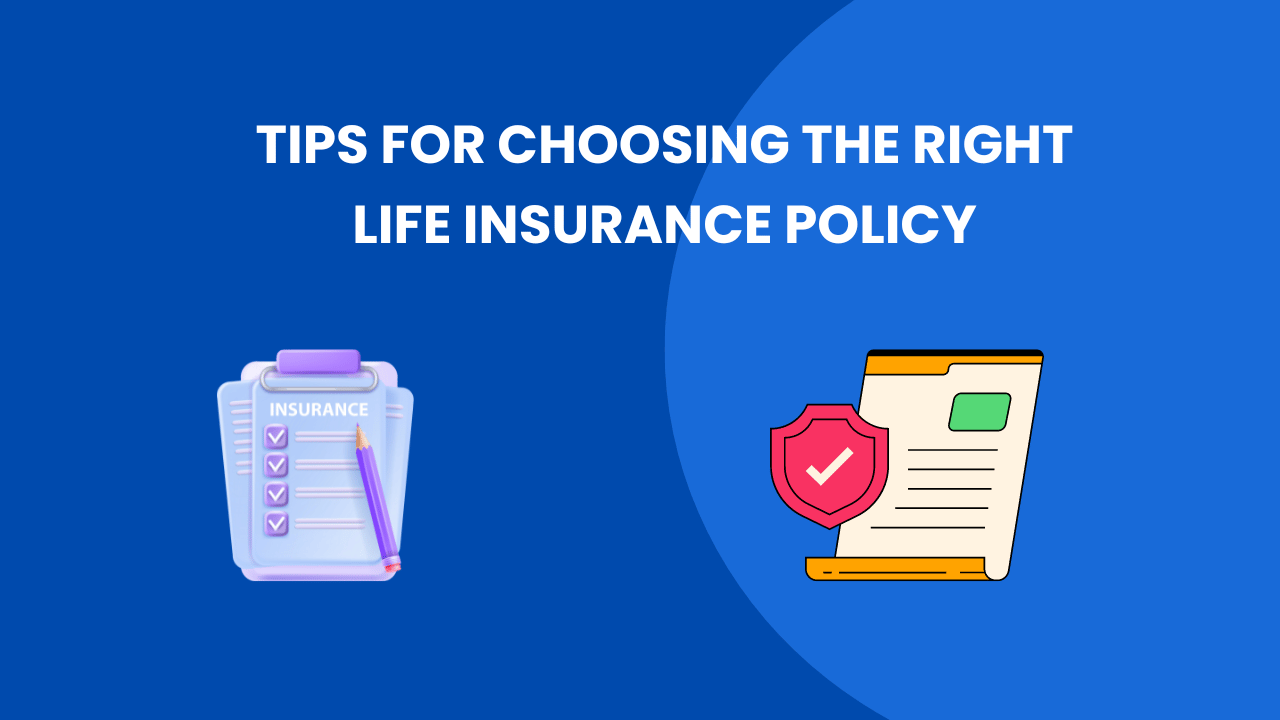Choosing the right life insurance policy is a crucial decision that can provide financial security and peace of mind for you and your loved ones. With so many options available, navigating the world of life insurance can be overwhelming. In this comprehensive guide, we’ll discuss ten essential Tips for Choosing the Right Life Insurance Policy when selecting a life insurance policy that best fits your needs and circumstances.
Table of Contents
Assess Your Needs and Goals
Before diving into the realm of life insurance, take some time to evaluate your financial situation, future goals, and the needs of your dependents. Consider factors such as your age, income, debts, lifestyle, and the number of dependents you have. Ask yourself questions like:
- What financial obligations do I have?
- How much income replacement will my family need?
- Do I have outstanding debts, such as a mortgage or student loans?
- Are there future expenses I need to plan for, such as college tuition or retirement savings?
By understanding your needs and goals, you can determine the type and amount of coverage that will provide adequate protection for your loved ones.
Understand the Different Types of Life Insurance
Life insurance policies come in various types, each with its own features and benefits. The two primary types of life insurance are:
- Term Life Insurance: Provides coverage for a specific period, typically 10, 20, or 30 years. It offers a death benefit to beneficiaries if the insured passes away during the term of the policy.
- Permanent Life Insurance: Offers lifelong coverage and includes policies such as whole life, universal life, and variable life insurance. These policies also accumulate cash value over time, which can be accessed or borrowed against.
Consider the pros and cons of each type of life insurance and choose the one that aligns with your needs and financial objectives.
Determine the Coverage Amount:
One of the most critical decisions when buying life insurance is determining the appropriate coverage amount. A general rule of thumb is to aim for coverage that is at least 10-15 times your annual income. However, this may vary depending on your specific circumstances and financial obligations.
Consider factors such as:
- Income replacement for your family
- Outstanding debts and financial obligations
- Future expenses, such as education or retirement savings
- Funeral and final expenses
By accurately assessing your coverage needs, you can ensure that your loved ones are adequately protected in the event of your passing.
Compare Quotes from Multiple Insurers
Don’t settle for the first life insurance policy you come across. Take the time to shop around and compare quotes from multiple insurers to ensure you’re getting the best coverage at the most affordable price. Be sure to consider factors such as the insurer’s financial stability, customer service reputation, and policy features.
Online comparison tools and independent insurance agents can help simplify the process and provide you with multiple quotes from different insurers.
Consider Additional Riders and Options
Many life insurance policies offer additional riders and options that can enhance your coverage and provide added benefits. Common riders include:
- Accelerated Death Benefit Rider: Allows you to access a portion of the death benefit if you are diagnosed with a terminal illness.
- Waiver of Premium Rider: Waives premium payments if you become disabled and unable to work.
- Guaranteed Insurability Rider: Allows you to purchase additional coverage at specified future dates without undergoing a medical exam.
Carefully review the available riders and options and consider adding those that align with your needs and priorities.
Review the Policy’s Terms and Conditions
Before finalizing your life insurance policy, thoroughly review the terms and conditions outlined in the contract. Pay close attention to:
- Premium payments: Understand how much you’ll need to pay and how often.
- Coverage details: Review the death benefit amount, policy term, and any exclusions or limitations.
- Surrender charges: If you have a permanent life insurance policy, be aware of any surrender charges or penalties for early termination.
- Policy illustrations: Examine the projected cash value and growth potential of permanent life insurance policies.
If you have any questions or concerns about the policy’s terms, don’t hesitate to seek clarification from your insurance agent or company.
Evaluate the Insurer’s Financial Strength
When choosing a life insurance policy, it’s essential to select a reputable insurer with a strong financial standing. Check the insurer’s credit ratings from independent rating agencies such as A.M. Best, Standard & Poor’s, and Moody’s to assess their financial stability and ability to meet future obligations.
A financially secure insurer is more likely to fulfill its promises and provide timely payouts to beneficiaries in the event of a claim.
Understand the Underwriting Process
Life insurance companies evaluate applicants’ risk factors through a process called underwriting. During underwriting, insurers assess factors such as your age, health, lifestyle, and medical history to determine your insurability and premium rates.
Be prepared to provide detailed information about your health and lifestyle, including medical records, family history, and lifestyle habits such as smoking or hazardous activities. The underwriting process may vary depending on the type of policy you choose and the insurer’s guidelines.
Review Your Policy Regularly
Life insurance is not a one-and-done purchase. Life changes, such as marriage, the birth of a child, or a change in employment, can impact your coverage needs. It’s essential to review your life insurance policy regularly and make adjustments as needed to ensure it continues to meet your financial goals and obligations.
Consider conducting an annual policy review with your insurance agent to assess any changes in your life circumstances and update your coverage accordingly.
Seek Professional Guidance
Navigating the complexities of life insurance can be challenging, especially for those unfamiliar with insurance terminology and concepts. Consider seeking guidance from a licensed insurance agent or financial advisor who can provide personalized advice tailored to your needs and goals.
An experienced professional can help you understand your options, compare policies, and make informed decisions that align with your financial objectives.
Conclusion
Choosing the right life insurance policy requires careful consideration and thorough research. By following these ten essential tips, you can navigate the process with confidence and select a policy that provides financial security and peace of mind for you and your loved ones. Remember to assess your needs, compare quotes, review policy details, and seek professional guidance when needed. With the right policy in place, you can rest assured knowing that your loved ones will be protected no matter what the future holds.
FAQs of Tips for Choosing the Right Life Insurance Policy
Q: How much life insurance coverage do I need?
A: The amount of life insurance coverage you need depends on various factors, including your income, financial obligations, and future goals. Consider factors such as income replacement for your family, outstanding debts, and future expenses when determining your coverage needs.
Q: What is the difference between term life insurance and permanent life insurance?
A: Term life insurance provides coverage for a specific period, typically 10, 20, or 30 years, while permanent life insurance offers lifelong coverage. Permanent life insurance policies also accumulate cash value over time, which can be accessed or borrowed against.
Case Study of Tips for Choosing the Right Life Insurance Policy
Sarah, a 35-year-old mother of two young children, recently decided to purchase life insurance to protect her family’s financial future. After assessing her needs and goals, Sarah opted for a 20-year term life insurance policy with a death benefit of $500,000.
Unfortunately, tragedy struck when Sarah passed away unexpectedly in a car accident five years into the policy term. Thanks to her life insurance coverage, Sarah’s beneficiaries received the full death benefit, providing them with financial support to cover living expenses, mortgage payments, and future educational expenses for her children.
Sarah’s case highlights the importance of having adequate life insurance coverage in place to protect your loved ones in the event of your passing. By carefully assessing your needs, choosing the right policy, and regularly reviewing your coverage, you can ensure that your family’s financial future is secure no matter what life brings.




